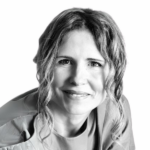Medical doctors and Surgeons
Cancer: a message of hope in the week dedicated to prevention
Dr. Barbara Cagli, head of plastic and cosmetic surgeon at the Breast Unit of Campus Bio-Medico University in Rome, offers a message of hope: “I like to think that breast cancer is always operable.”
In the interview with Revée journalists, during the week dedicated to the JTWIA (Just The Woman I Am) project, she reassures patients undertaking the journey with her specialized unit. Statistics state that 1 woman out of 8 can develop breast cancer. Yet, healing and survival rates have significantly increased compared to years ago, especially for patients treated at Breast Units.
Breast cancer and healing process

Over the past 40 years, attention to the psychological and physical well-being of women has been growing more and more. This is why breast reconstruction surgery is increasingly associated with mastectomy. The former can be of three types: autologous, heterologous, and hybrid. In the first case, “patients have their breast reconstructed with their own tissues —explains Dr. Cagli—, which can be taken from the abdomen or from the dorsal region.”
The heterologous intervention, instead, uses an external body that acts as a skin dilator. Implanted prostheses can be round or anatomical, meaning they have a greater expansion in the lower part, just like the natural female breast.
Finally, “Hybrid reconstruction —adds the surgeon— resorts to both prostheses and patients’ own tissues.” In this case, in fact, prostheses are the fulcrum of the reconstruction and are supported with tissues, such as fat or the great dorsal flap.
Reconstruction occurs, in most cases, immediately after the mammary gland is removed. If the tumor is confined to only one quadrant of the breast, a localized quadrectomy can be performed. In this case, surgical repair takes place by moving tissues from one quadrant of the breast to the other.
Postoperative care
Postoperative care after surgery is complex. Patients underwent two operations: tumor excision and surgical repair. Absolute rest is required for the first four weeks, without any strain on arms.
Cagli continues: “Although the cuts made during this surgery are small, a whole gland is still removed, so it is necessary to allow the tissues to adapt to the new condition. The vessels that nourish the gland are also removed, so it is important to thoroughly moisturize the skin.”
It is also necessary to take care of the scars by applying specific gels. “It is not easy to ask patients to massage the scar immediately — explains Cagli—; it’s not a race, everyone needs their time.”
One needs to adapt to the change without haste, and above all consider that a reconstructed breast will never be like a natural breast. For this reason, patients need to find their own balance, and the reconstruction helps them significantly to achieve it.
The importance of Breast Units and prevention
Breast Units play a vital role in the fight against cancer. They are made up of numerous professionals who help patients throughout the entire process.
“Breast Units are multidisciplinary teams with specialists providing excellent care to our patients,” explains the surgeon.
Breast Units are specialized units made up of psychologists, nurses, case managers, oncologists, radiotherapists, radiologists, physiotherapists, and many other professionals. These centers are widespread throughout Italy, and their healing rates are much higher than non-specialized centers.

Another important ally in the fight against cancer is prevention. “We must not be afraid of undergoing routine checkups — explains Dr. Cagli— because they save our lives.”
For women over 40, it is recommended to have a mammogram or ultrasound once a year. However, this is only a general guideline. In fact, those who have had family cases of breast cancer are advised to have a breast checkup even before turning 40.
Furthermore, who wants to undergo a breast lift or a breast augmentation should schedule a preventive checkup with a specialist to make sure the breast is healthy first. “The same plastic and cosmetic surgery can be a prevention opportunity—admits the doctor—. Surgery is performed only after checking that there are no issues.”
Prevention, the work of Breast Units, and surgery are the three fundamental steps in the fight against breast cancer.




































